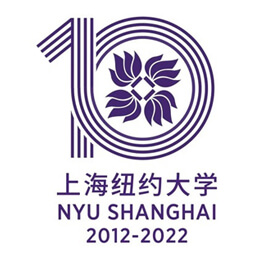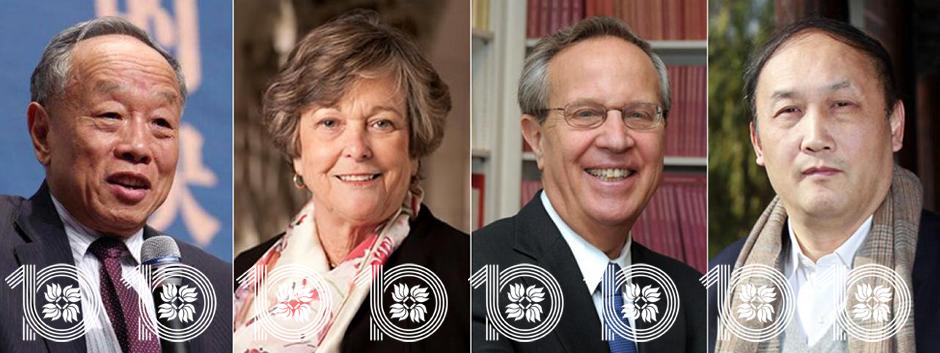To mark the 50th anniversary of the release of the Shanghai Communiqué on February 28, 1972 and the beginning of rapprochement between the U.S. and China, NYU Shanghai and East China Normal University today co-hosted a webinar highlighting five decades of U.S.-China collaboration in higher education.

The event, “Bridges of Knowledge: A Half Century of U.S.-China Collaboration in Higher Education,” brought together four experts – former Foreign Minister of the People’s Republic of China Li Zhaoxing, former President of Agnes Scott College Mary Brown Bullock, former President of Yale University Richard Charles Levin, and former President of Zhejiang University Yang Wei – to reflect on their experience building partnerships in higher education between the two countries.
Over 250 viewers in 10 countries and regions joined the online event, which is the first in a series of conversations exploring 50 years of joint efforts by U.S. and Chinese universities, scholars, and students.
“The Shanghai Communiqué was a diplomatic breakthrough that marked the beginning of a new phase in the oscillating dynamic between the two governments,” NYU Shanghai Vice Chancellor Jeffrey Lehman said to kick off the event. “It enabled the peoples of the two countries to resume normal, healthy interpersonal relationships, relationships that had been suspended for more than two decades. … Universities developed cooperative agreements, professors formed research partnerships, and students crossed the ocean for their undergraduate or graduate educations. Deep friendships transformed the lives of the individuals involved, and the products of these working partnerships changed the way that people live all around the world.”
“NYU Shanghai is both a beneficiary and embodiment of this vision, built upon the many Sino-US educational and university partnerships of the last half century,” said NYU Shanghai Chancellor Tong Shijun, who moderated the panel and guided the panelists to reflect both on how they understood their efforts at the time the Communiqué was issued and on how they view those efforts today with the benefit of hindsight.
Former Foreign Minister of China Li Zhaoxing shared that the Communiqué signing day was a very memorable day for him.
“I will never forget that on February 28, 1972, the Shanghai Communiqué was published in the small auditorium of the Jinjiang Hotel in Shanghai. I have been there many times, and every time I remember this wonderful and important moment to open up the relationship between China and the United States,” Li said.
Li recounted his own story of learning English from American teachers when he was at Peking University, as well as his experience lecturing at universities across the U.S. during his service as China’s ambassador to the country. He stressed the importance of cross-cultural education to himself personally and to everyone on both sides of the Pacific.
When asked about her reaction to the news of the Communiqué, former President of Agnes Scott College Mary Brown Bullock recalled, “In February 1972, I was a Ph.D. student writing a dissertation on Chinese history. … I stayed up all night watching on our terrible TV the coverage of Nixon's visit to China, waiting for the handshake between Nixon and Vice Premier Zhou Enlai.”
Bullock shared that the initial educational exchanges between the two countries in the mid ‘70s were very limited in scope. When she worked with the Committee on Scholarly Communication with the People’s Republic of China during President Jimmy Carter’s administration, she proposed that each country should send 10 students for exchange at a time, which she said was an “audacious” proposal at the time. But Vice Premier Deng Xiaoping had an even bolder idea – sending 5000 Chinese students to the U.S., a proposal which Carter accepted.
“This was the turning point in U.S.-China educational relations,” Bullock said. “So the exchanges began. … Even though this is my life’s work, I was flabbergasted at how quickly all this took place. In less than five years, you had an agreement that did involve 41 American universities and 100 Chinese universities. … Until recently almost 400,000 Chinese students worked in American schools and thousands of American students and scholars in Chinese universities.”
Former President of Zhejiang University Yang Wei shared that as one of the first group of Chinese students who went to the U.S. to seek further education in 1981, he saw firsthand the importance of the partnership between the two countries. Not only did he return from his time in the U.S. with a Ph.D. from Brown University, he also brought back many fond memories of how his professors and classmates helped him during his four years there. When he became the President of Zhejiang University a few decades later, Yang led two delegations of presidents from Chinese universities to visit and learn from their U.S. counterparts.
“I would say that the rapid development of Chinese universities in the past two decades has greatly benefited from the exchanges among the universities of the two countries. Collaborative research papers co-written by American and Chinese scholars comprise a large chunk of those co-written by Chinese and international scholars. … I think the collaboration among non-governmental institutions and among people will continue to thrive, if we keep pushing it,” Yang said.
Former President of Yale University Richard Charles Levin recounted that he was captivated by the dynamism and innovation of China when he first visited in 2001. “I realized that for Americans, learning about China and understanding China better and helping to promote a friendly, cooperative relationship between the U.S. and China was actually of critical importance to the future of the planet. … Universities are the kinds of institutions that have stability … and the connections at that level, [among] people that are the intellectual leaders of their society, have a strong foundation, which helps to stabilize the relationship between the two countries.”
“Today, where tensions between our two countries are greater, I still think there's a strong foundation below, and the future of collaboration through universities will remain,” Levin said.
To close the event, Lehman remarked that hearing the panelists’ stories inspired him to feel great pride in working in higher education, which has played an important role in building bridges between the two countries.
“And I also feel a deep admiration for the work that you individuals have done to lead that process,” Lehman told the panel’s participants. “I think today it is more important than ever that ordinary citizens and government officials know this history and see the value that it offers for both countries and for all of humanity.”


